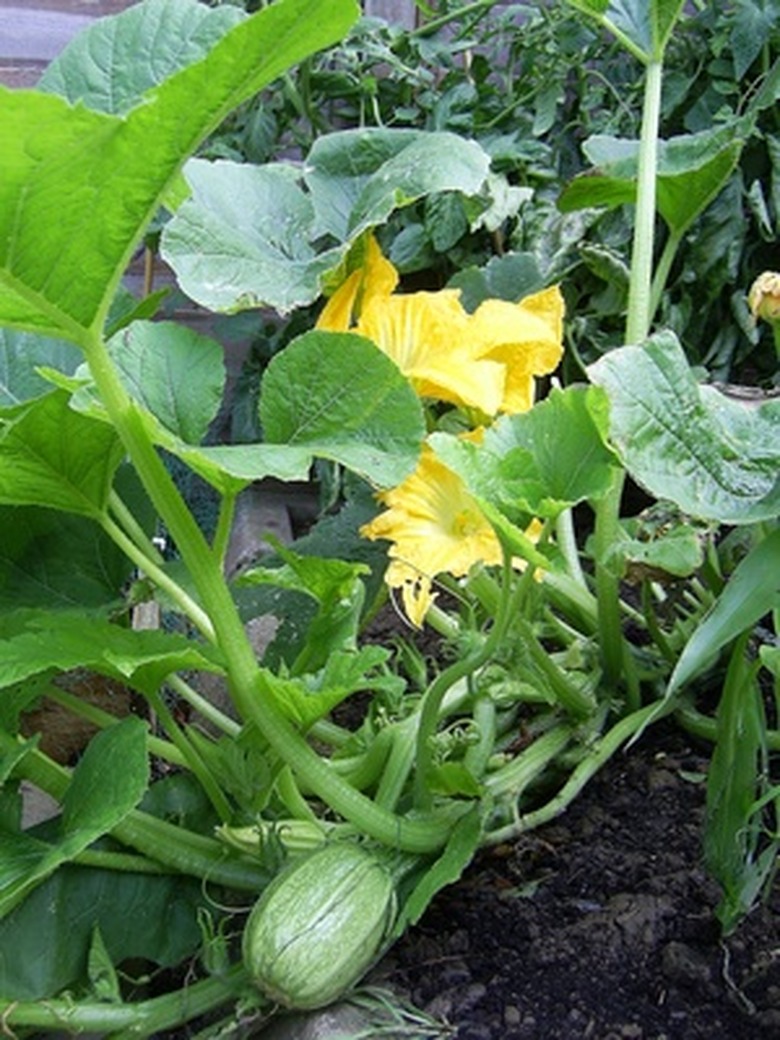How To Keep Summer Squash From Losing Blooms & Not Producing Squash
Summer squash are prolific plants, often producing more flowers than the plant can support. When this happens, the excess flowers will naturally fall off. The first flush of flowers is usually male, followed a week later by the female flowers. Do not be alarmed when these first flowers fall away. This is only a problem if most or all of the female flowers are lost.
When all flowers are lost, the problem is usually a problem of excess rather than lack. An excess of fertilizer, moisture, temperature or the excessive use of insecticides is usually the problem.
- Summer squash are prolific plants, often producing more flowers than the plant can support.
- This is only a problem if most or all of the female flowers are lost.
Step 1
Perform a soil test to determine fertilizer needs. Use a complete low nitrogen fertilizer like 5-10-10 before planting.
Step 2
Distinguish between male and female flowers. Male flowers lack the swelling of the ovary at the base of the blossom. Male flowers drop after producing their pollen while female flowers should remain to produce fruit.
Step 3
Look for signs of pollinating insects. Flowers that are not pollinated will drop along with their tiny fruit. Pollinate by hand if insects are not present by brushing inside a male flower with a paintbrush or cotton swab to gather pollen, then transfer it to the female flowers by brushing inside them.
- Perform a soil test to determine fertilizer needs.
- Pollinate by hand if insects are not present by brushing inside a male flower with a paintbrush or cotton swab to gather pollen, then transfer it to the female flowers by brushing inside them.
Step 4
Protect squash flowers from high winds, if possible, and avoid excess moisture. Water squash in the morning as needed.
Step 5
Use a shade cloth during the hottest part of the summer. Blossoms are lost due to extreme heat. In tropical areas, plant squash in the early spring and fall.
Squash Blooms But Doesn't Produce
Squashes and other cucurbits have separate male and female blossoms. Female blossoms develop later, are farther out on the vine and have a small, undeveloped fruit at the base of the flower. Only female flowers can yield fruit; and in order for the fruit to develop rather than drop off, the flower must be successfully pollinated.
- Protect squash flowers from high winds, if possible, and avoid excess moisture.
Warning
Avoid over-fertilization with nitrogen. Too much nitrogen encourages the growth of vegetation to the detriment of flowers and fruit.
References
- University of Illinois: Common Problems of Vegetable Crops
- Purdue Extension: Squash Blossom Drop
- Purdue University Cooperative Extension: Growing Cucumbers, Melons, Squash, Pumpkins and Gourds
- Washington State University Spokane County Extension: Why Blossoms of Some Vegetable Fail to Set Fruit
- University of California Vegetable Research and Information Center: Fruit Set Problems in Squash, Melons, and Cucumbers In Home Gardens
